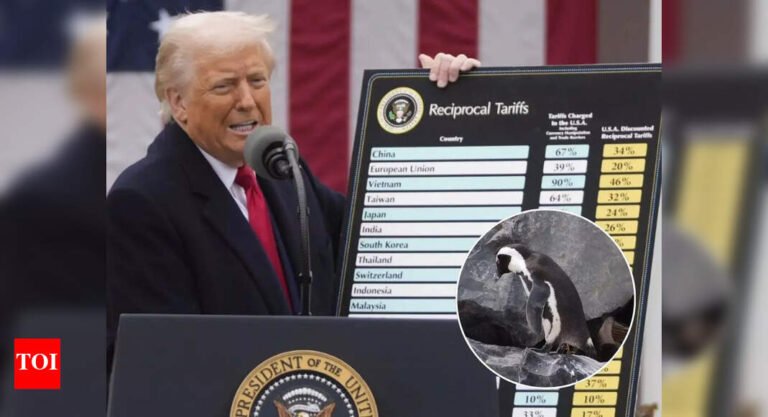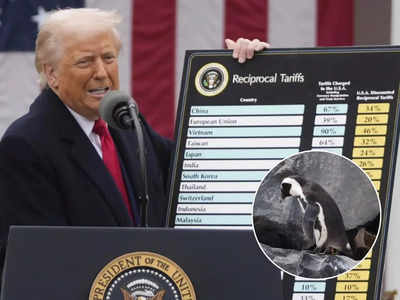US President Donald Trump‘s “reciprocal” tariffs on dozens of countries kicked in Wednesday, slapping Chinese goods with a steep 104% duty and intensifying his global trade war—even as his administration moves toward talks with several nations.
The sweeping tariffs have disrupted a global trading system that held steady for decades, stoked recession fears, and sent stock markets around the world into a sharp decline.
Trump’s tariff moves have rattled global markets, sent the S&P 500 toward bear territory, and triggered panic among businesses and consumers already bracing for rising costs.
But how exactly did the number get so high? The 104% figure isn’t from a single sweeping order, but from a sequence of layered duties. Trump started with a 10% tariff on Chinese goods in February over the country’s role in the fentanyl trade, followed by another 10% in March. Then, just last week, he added 34% more as part of a broader “reciprocal” tariff campaign. China’s promise to strike back prompted Trump to tack on an additional 50%, bringing the total to 104%. “These are tailored, highly tailored deals,” he said. But they’re also compounding, and that’s where the math gets intense.
Explaining the math behind the 104% tariff
- To understand Trump’s 104% tariff on China, it’s important to know it’s not one flat tax applied all at once—it’s cumulative. As per a Wall Street Journal report, here is how the Trump administration arrived at 104% tariff on China:
- February: 10% tariff imposed on Chinese goods over fentanyl-related concerns
- March: Another 10% added, bringing the total to 20%
- Last week: Trump adds 34% as part of his “reciprocal” tariff regime → total now 54%
- This week: China threatens retaliation → Trump responds with 50% more → final total: 104%
It’s also important to note: these duties stack on top of existing tariffs from Trump’s first term and some increases under Biden. The Peterson Institute for International Economics estimates the average tariff rate on Chinese goods at 20.8% before Trump’s second term began. So the effective average tariff rate on Chinese imports now hovers near 125% when you factor in past trade measures, the WSJ report added.
This isn’t just a headline number—it’s a layered financial burden that hits importers, ripples through supply chains, and ultimately raises prices for US consumers. That’s why nearly 75% of Americans expect everyday goods to get more expensive in the months ahead, according to a Reuters/Ipsos poll. As Trump pushes this hardline strategy, the math isn’t just political—it’s economic pain, multiplied
- Global stock markets are tumbling, with the S&P 500 losing $5.8 trillion in value
- Americans brace for higher prices; 3 in 4 expect everyday goods to cost more
- Some goods already in transit are exempt until May 27
- China has vowed to “fight to the end”—and more retaliation is likely
(With inputs from agencies)



